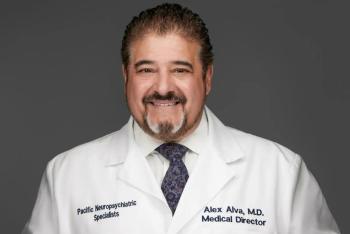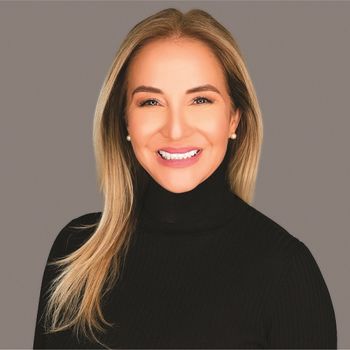
- Vol 33 No 6
- Volume 33
- Issue 6
How I Learned to Start E-Prescribing: In Pursuit of the Fabulous Fob
Depend on it: like managed care, e-prescribing will come to your neighborhood sooner or later-- and will truly constitute the law of the land. Here's guidance for the perplexed.
It’s been quipped that the first course in medical school is Bad Handwriting. I needed no such instruction-my penmanship has been deplorable since childhood. In college, a lit/crit professor characterized my scrawl on his final exam as “Hittite without a Rosetta Stone.”
Things were so bad that I had to learn to type at 15. In college I exchanged my battered Olivetti portable for the first clattering electric machine, then switched to IBM’s elegant Selectric with the whirlyball in the ‘60s. I started word processing on a computer in 1987 and have pounded away ever since.
I ordinarily quail before anything with moving parts beyond a corkscrew. Word processing never gave me the willies though, and over decades I’ve typed the equivalent of the Library of Congress. But I remain spooked by spreadsheets, drop-boxes, data clouds, and the like.
I’ve bought only a few computers since 1987-not because of my scrupulous maintenance, but through sheer dumb luck. When the rare problem arises with my old PC, I phone Bill, my bemused PC wizard. Bill once called my office an analog museum. He enjoys the challenge of repurposing Word Perfect 5.1 for the latest Windows iteration. It’s a simple, elegant program. One doesn’t have to be burdened by a mouse. What else would I ever need from a computer beyond e-mail, playing online poker, or buying movie tickets? And so I dwelt in PC paradise.
Until, for my sins, I was tasked with e-prescribing.
For those not au courant, the DEA has striven for years to identify double-dipping abusers, as well as the feel-good docs who score megabucks selling controlled substances to a strung-out clientele.
In 2010, the agency issued guidelines for prescribing electronically. Contrary to common misconception, these are not the law of the land. The DEA recommended-not commanded-that states adopt their own version of their basic e-prescribing initiative. Because of bureaucratic boondoggling (and possibly libertarian objections), only 2 states have mandated the program so far-Minnesota and New York (where I live). Compliance by the majority is expected within the next 3 to 5 years.
In fact, many large practices across the nation have been e-prescribing without fuss for some time. Practice members are usually not much involved: E-prescribing has become another skill set of office workers who navigate the ever murkier waters of insurance and Medicare paperwork. It’s the dinosaurs in solo practice like me who suffer Kierkegaardian fear and trembling before technology that seems as arcane as singularity theory.
The New York State Medical Society announced in 2014 that e-prescribing was soon going to be mandatory. Vendors commenced to outdo each other in assuring intimidated practitioners that the software they offered was the gold standard, with personalized support available in a nanosecond. My chronic procrastination was stoked when the state granted a year reprieve for practitioners and vendors to get their respective acts together. (Inter alia, setting up unhackable security for e-prescribing controlled substances was proving problematic.) I lollygagged until last winter, when Albany’s makers and shakers dispatched a warning that 40% of New York docs still hadn’t complied, and rammed home a final deadline of March 27, 2016. If one hadn’t mastered e-prescribing by then, harsh correction would follow. Its nature was obscure-perhaps revocation of license followed by garroting by a gorilla.
One could get a waiver. But you needed to supply incontestable proof that your Internet connection had been compromised by Martian attack, or that you were demented, quadriplegic, or dead. Clearly one needed to man up.
I contacted several leading companies that promised calm passage through the e-prescribing quagmire. And repeatedly encountered the same snafus. Registering one’s personal/medical credentials for e-prescribing uncontrolled drugs was pretty simple assuming familiarity with computer and Internet use. (Inevitably, a minority still won’t have the equipment or know-how.)
Sainthood is easier
Receiving an imprimatur for controlled substances was another matter altogether-more difficult to achieve than successful vetting for canonization. To acquire EPCS (Electronic Prescribing of Controlled Substances) capability, I had to endure an exasperating second round of encryption to prove unassailably that I was me. This included answering a round of secret questions. I had never been asked some before, but could dredge up credible answers. The ambiguity of others reminded one of those enigmatic SAT or MCATs conundrums.
Eg-which car on a list of 4 makes did I own-Subaru included-or “none of the above”? I sold a Subaru Outback a decade ago. But depending on the vendor, I either still owned the Outback, or didn’t. One vendor barred me from further applying online- possibly because I failed the Subaru inquisition, hadn’t won the Van Cliburn competition, or joined the flat-earth society. In any case, getting a passport to Saturn’s rings seemed quicker than mail-registration for e-prescribing.
The prize for this mad marathon was a tiny “fob”-a miniscule Enigma machine that generated a different 6-number combination every minute so as to render a controlled drug prescription unhackable. By now I was paranoid enough to suspect the fabulous fob was in fact just a toy spinning its gears. (One can e-prescribe through a cell phone or other mobile device using the fob or by other means. However, the mobile could be stolen or lost. Besides, the fob’s materiality was obscurely comforting.)
Even if you managed to acquire the fab fob, the nuts and bolts of e-prescribing were well-nigh incomprehensible, written in the cockamamie English of the instructions that come with any electronic device from the mysterious East. FAQs maddeningly addressed every issue saving the one at hand.
The vendor’s vaunted personalized support turned out to be as impersonal as an eviction notice. Telephone contact was insanely difficult to arrange. Should one succeed, the entity on the other end ratatatted away in obscure technish-I thought of the tromboned WAH WAH WAH of adult voices in Charlie Brown cartoons.
One impatient rep remonstrated that a 9-year-old could follow his drift. No problem indeed for my 9-year-old grandson. Like others of his generation, he entered the world clutching a mouse.
A solution dawns
Three weeks before the fatal March deadline and still no cure for the e-prescribing blues, I suddenly realized the solution had been lying in plain sight, like Poe’s Purloined Letter. I contacted the tech-savvy majordomo of a friend with a huge psychopharm practice. She referred me to a company whose software essentially ran every aspect of her office.
The company’s e-prescribing platform delivered on every failed promise of the Behemoths. A congenial technician rapidly guided me through the registration process for controlled and ordinary prescriptions. It wasn’t nearly as intricate as I had been led to believe. The answers to those daunting “secret questions” turned out to be mostly derived from one’s easily accessed credit report. The question of mail registration simply never came up. The firm also had doctors on call, so I quickly completed the final “EPCS Verify” process that requires one physician to validate another’s reality.
When the fabulous fob finally arrived, the firm’s lucid online guidebook had me up and running within a few days. Web conferences were frequently available, open to all. Support people were always easily reached, often immediately, invariably good-humored about the e-prescribing whim-whams.
I asked the outfit’s knowledgeable executive VP if others under the gun suffered similar electronic heebie-jeebies. Not everyone, he said, but sufficient unto the day were the heebie-jeebies thereof. “You guys are so SMART!” he commented wryly. “You do brain surgery! Heal fatal disease!! Why does a simple program make you so crazy?!”
He added that the doctors getting crazy about e-prescribing aren’t as problematic as those who deny the requirement to learn it. Apparently, some practitioners believe it will somehow go away if ignored long enough. One doesn’t have to be a flaming narcissist to believe oneself “above” yet another piece of bureaucratic b……t.
Depend on it: like managed care, e-prescribing will come to your neighborhood sooner or later, and will truly constitute the law of the land. Punishment for disobedience isn’t the main issue here: you just won’t be able to get your patients their drugs if you don’t climb on board.
Advice to the perplexed
If your company’s program is reasonable, but support is hard to come by, get help from a colleague familiar with the particular set-up, or pay an expert like Bill to teach you the protocol. From a cognitive/behavioral perspective, learning usually comes easier if your hands are on the keys, with a mentor beside you. Phone tutoring is fine, as long as there’s no browbeating techie. If you can’t find an already registered friend, hire a pro, or a computer-savvy kid. The cost isn’t prohibitive. And get an extra fob. It’s easy to lose one.
Having achieved e-prescribing, one is entitled to ask-cui bono? Who profits from it and to what end? Aside from a few greedy vendors, the cost is nominal. Perhaps it was initially believed that e-prescribing was going to generate Big Pharma megabucks. No one I spoke to in the industry thinks so now.
Instead, e-prescribing is perceived as a potential touchstone for introducing comprehensive computer solutions to medical office management. Some companies already are vigorously flogging these services-and they don’t come cheap. Other vendors, like mine, describe them without offensive flackery.
Will e-prescribing curb the epidemic of drug abuse by improved screening to identify bummed-out addicts as well as Dr Feelgood bums? It’s impossible to know so early in the game. Setting aside issues like invasion of privacy-and that’s no small concern-many within and outside the industry think significant success is unlikely.
Electronic prescriptions won’t have much impact on the immense cash market created by physicians who sell drugs to the addicts who seek them. The cartels’ worldwide government corruption in places low and high-notably regulatory and enforcement agencies-will be little affected by American e-prescribing.
Research suggests that legalizing most addictive drugs-particularly opiates-in the setting of decent treatment centers would be more useful in bringing the Leviathan of abuse to heel. (E-prescribing could, of course, be performed in such programs.)
But legalizing drugs other than marijuana will not materialize soon, given the country’s prevailing conservative politics. And, whatever measures are taken, there will always be a fatal residue of misguided addicts and conniving doctors conspiring to stay beneath the radar.
The undeniable benefit of e-prescribing would be reducing the sometimes egregious mistakes caused by the pharmacist’s inability to decipher the physicians’ Hittite penmanship-a guesstimated 10%. (To be fair, errors are also caused by the pharmacists inadequately processing a totally legible prescription.)
A final note: at this writing, several medical organizations-I won’t name them-are endorsing specific vendors. Otra vez, cui bono? I submit that this practice should cease immediately.
In his introduction to William Burroughs’ novel, Naked Lunch, Jack Kerouac said, a Naked Lunch is “when everyone sees what is on the end of every fork.” You may not want to swallow what you see, but at least you know what’s on your plate.
In this spirit, a totally open, properly monitored marketplace must exist. You may legitimately object to e-prescribing, but at least you can determine exactly the quality and cost of services a specific vendor is touting.
Otherwise, CAVEAT EMPTOR!!!
Disclosures:
Dr. Greenberg practices psychiatry in Manhattan, New York. He continues to publish frequently on film, media, and popular culture. For many years, his cinema column appeared in Psychiatric Times. He has appeared frequently on national and international network and cable television programs including Good Morning America, Today, CBS Evening and Sunday news, PBS, CNN, Showtime, and BBC-TV. Please address communications to Dr. Greenberg at HRGSMES@AOL.COM. He reports that he uses DxScript as his e-prescribing service.
Articles in this issue
over 9 years ago
Wearable Devices for Mental Health: Knowns and Unknownsover 9 years ago
Introduction: Unique Needs and Innovative Opportunitiesover 9 years ago
Combat Veterans: Adaptation to Transitionover 9 years ago
Children in Foster Care: Issues and Concernsover 9 years ago
Breast Cancer: What Psychiatrists Need to Knowover 9 years ago
CDC Guideline for Prescribing Opioids for Chronic PainNewsletter
Receive trusted psychiatric news, expert analysis, and clinical insights — subscribe today to support your practice and your patients.




